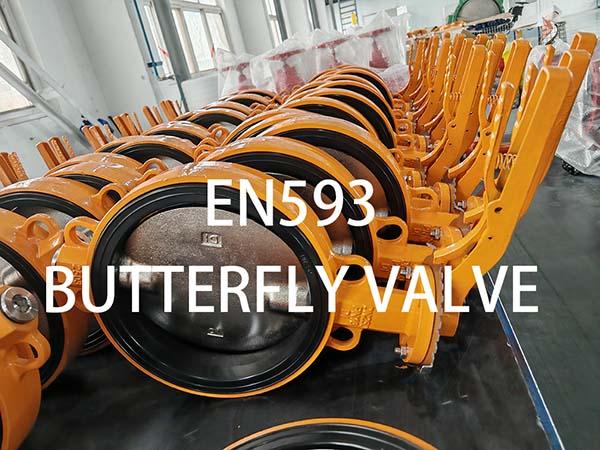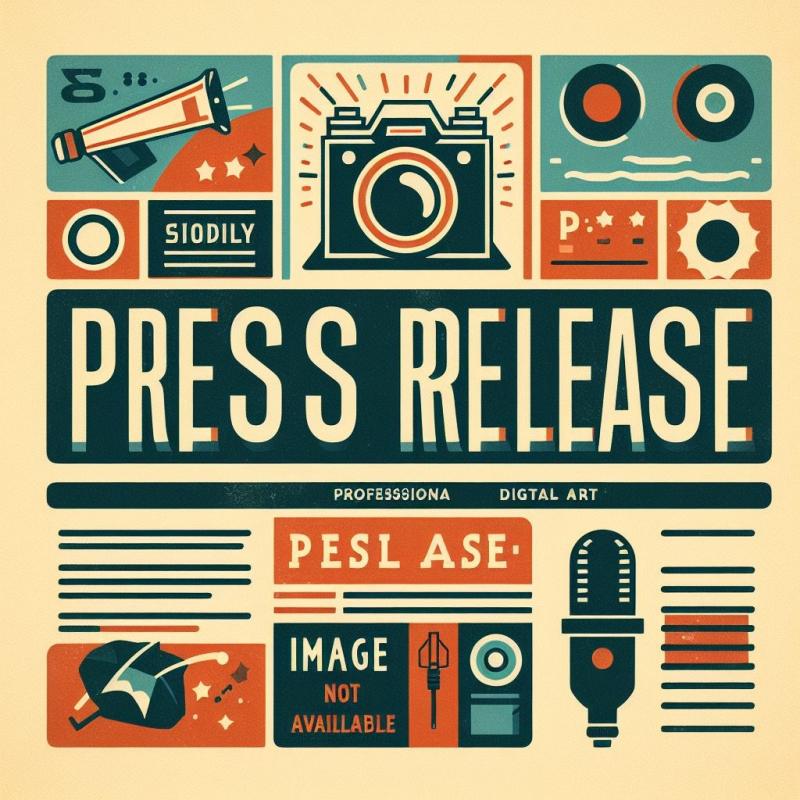Press release
What Are the Must-Have Certifications for Medical Heat Exchangers?
Image: https://statics.mylandingpages.co/static/aaanxdmf26c522mpaaaaz2wwe7ppkact/image/76894e0ac0734a079df1dd4e761a6331.webpI always prioritize certifications like ASME U-Stamp, ISO 13485, CE Mark, and FDA Compliance when I evaluate a medical Heat Exchanger [https://www.senjuncooler.com/heat-exchanger/]. These marks assure me of safety, reliability, and legal compliance. For specialized products such as a Copper Fin Heat Exchanger, these certifications demonstrate true commitment to quality.
Key Takeaways
* Certifications like ASME U-Stamp, ISO 13485, CE Mark, and FDA Compliance ensure medical heat exchangers meet safety, quality, and legal standards, protecting patients and users.
* Holding the right certifications opens doors to global markets, builds customer trust, and helps avoid costly recalls or legal issues.
* Maintaining certifications requires regular audits, thorough documentation, and ongoing quality checks to keep products reliable and compliant.
Essential Certifications for Medical Heat Exchangers
ASME U-Stamp
When I evaluate a medical heat exchanger, I always look for the ASME U-Stamp. This certification shows that the manufacturer meets strict ASME standards for the design, fabrication, and inspection of pressure vessels. The ASME U-Stamp applies to unfired pressure vessels, including heat exchangers, and certifies compliance with the ASME Boiler and Pressure Vessel Code (BPVC), Section VIII Division 1. To obtain this certification, manufacturers must pass a thorough inspection process that covers design, fabrication, testing, and documentation. The process usually takes about six monthsand includes audits of both products and production teams. The BPVC code updates every two years, so manufacturers must stay current to maintain certification. I trust the ASME U-Stamp because it ensures quality assurance, supports regulatory compliance, and validates the manufacturer's expertise. This is especially important for specialized equipment like the Copper Fin Heat Exchanger, which often operates under demanding conditions.
ISO 13485
I consider ISO 13485 essential for any medical heat exchanger manufacturer. This certification focuses on quality management systems for medical devices, emphasizing regulatory compliance, patient safety, and process quality. For products like the Copper Fin Heat Exchanger, ISO 13485 requires validated processing procedures and risk management. Certification bodies check that manufacturers follow these requirements, which is critical for high-risk devices. ISO 13485 also aligns with regulations such as the EU Medical Device Regulation and FDA Quality System Regulation. By following this standard, manufacturers improve product safety, regulatory conformity, and operational efficiency. I have seen how ISO 13485 increases stakeholder confidence and provides a competitive edge by demonstrating a commitment to quality.
CE Mark
When I want to access the European market, I know the CE Mark [https://aqssolution.com/ce-mark/] is non-negotiable. The process for obtaining CE Mark certification for medical heat exchangers involves several steps:
* Identify the relevant EU directives and harmonized standards, such as the Medical Devices Regulation and Pressure Equipment Directive.
* Conduct a conformity assessment, including risk evaluation and product design review.
* Test the product according to EU standards for safety, mechanical, electrical, chemical, and environmental aspects.
* Compile technical documentation, including product descriptions, risk assessments, and test reports.
* Issue a Declaration of Conformity to confirm compliance.
* Affix the CE Mark visibly on the product and packaging.
* Maintain ongoing compliance and keep documentation available for authorities.
For a Copper Fin Heat Exchanger, this process ensures the product meets all safety and regulatory requirements for the EU market.
FDA Compliance
If I want to sell medical heat exchangers in the United States, I must meet FDA requirements. The FDA enforces Good Manufacturing Practices (GMP) for devices used in manufacturing, processing, or holding medical products. For example, heat exchangers used in pharmaceutical processes must have a pressure differential and a monitoring system to detect leaks. This prevents contamination between fluids of different quality, which is critical for patient safety. For heater-cooler devices used in surgeries, the FDA requires closed water circuits to separate the heater-cooler fluid from patient blood and solutions. This design prevents cross-contamination and ensures patient safety. I always make sure that Copper Fin Heat Exchanger designs meet these FDA standards, especially when they are used in sensitive medical environments.
UL/cUL Certification
I pay close attention to UL and cUL certifications when considering North American markets. These certifications ensure electrical safety and compliance with national standards. Here's a quick comparison:
ASPECT
UL CERTIFICATION (UNITED STATES)
CUL CERTIFICATION (CANADA)
Geographic Applicability
United States
Canada
Governing Standards
ANSI/NFPA 70, UL standards
CAN/CSA 22.1-12, Canadian Electrical Code
Enclosure Rating Systems
NEMA ratings
IPXX ratings (European influence)
Moisture Protection
Standard levels
Higher requirements
Certification Marks
UL mark
cUL mark
Interchangeability
Not interchangeable
Not interchangeable
For a Copper Fin Heat Exchanger, these certifications guarantee that the product meets the electrical safety requirements for both the US and Canadian markets. I often request unified testing to streamline the process and ensure compliance in both regions.
AHRI Certification
I recognize the value of AHRI certification, especially for heat exchangers used in HVAC and refrigeration applications. The Air-Conditioning, Heating, and Refrigeration Institute (AHRI) certification verifies that products meet performance standards for efficiency and reliability. For medical heat exchangers, including the Copper Fin Heat Exchanger, AHRI certification assures me that the product will perform as specified under real-world conditions. This is crucial for applications where temperature control and reliability directly impact patient safety and product quality.
ISO 9001:2015 and ISO 14001:2015
I always look for manufacturers who hold both ISO 9001:2015 and ISO 14001:2015 certifications. ISO 9001:2015 focuses on quality management systems, ensuring consistent product and process quality. ISO 14001:2015 addresses environmental management, helping manufacturers control and reduce their environmental impact. For medical heat exchangers, these certifications mean:
* Robust quality management with continuous improvement and rigorous testing.
* Best practice manufacturing, product consistency, and defect reduction.
* Environmental responsibility through material reduction, recycling, and energy efficiency.
* Use of recycled materials and investment in energy-efficient machinery.
When I see a Copper Fin Heat Exchanger produced under these standards, I know the manufacturer values both quality and sustainability.
Copper Fin Heat Exchanger: Certification Considerations
The Copper Fin Heat Exchanger plays a vital role in many medical devices. Because of its direct impact on patient health, it must meet higher safety and reliability standards. I pay special attention to the following considerations:
* Appropriate IP (Ingress Protection) ratings [https://www.boydcorp.com/about-boyd/resources/technical-papers-and-guides/guide-to-thermal-management-considerations-for-medical-devices.html] to guard against dust and liquid ingress, especially for devices used outside controlled environments.
* Enclosure design, which affects the achievable IP rating. Larger openings may require protective features like finger guards.
* Fully enclosed designs with vacuum-tight seals for high IP ratings, ensuring safe touch temperatures on external surfaces.
* Cleaning and sterilization requirements, which may demand waterproof or conformal coatings to protect electronics while maintaining heat transfer.
* Biocompatibility standards, such as USP Class and ISO 10993, if the device contacts patients or is used in manufacturing ingestible products.
* Rigorous testing and redundant thermal management systems for life-critical devices.
* Consideration of noise, robustness, and temperature limits to ensure patient safety and device longevity.
I always ensure that Copper Fin Heat Exchanger designs address these certification requirements, as they are essential for safe and reliable operation in medical settings.
Real-World Example: senjun's Certification Pathway
I have seen firsthand how Ningbo Senjun New Materials Co., Ltd. (senjun) approaches certification. Senjun specializes in the research, development, and production of wire tube condensers and copper aluminum fin heat exchangers for a wide range of applications, including medical ultra-low temperature refrigerators and dehumidifiers. The company prioritizes certifications such as ASME U-Stamp, ISO 13485, CE Mark, and FDA compliance. Senjun also ensures that its Copper Fin Heat Exchanger products meet UL/cUL and AHRI standards for North American markets. By maintaining ISO 9001:2015 and ISO 14001:2015 certifications, senjun demonstrates a commitment to both quality and environmental responsibility. I trust senjun's products because their certification pathway reflects a deep understanding of regulatory requirements and a dedication to safety, reliability, and sustainability.
Why These Certifications MatterEnsuring Safety and Quality
When I select a medical heat exchanger, I know that certifications directly impact patient safety and product reliability. I have seen how accredited suppliers consistently deliver higher quality. For example:
* Accredited heat-treating suppliers show better quality performance than non-accredited ones.
* Programs like MedAccred, modeled after aerospace standards, focus on improving quality and patient safety in medical device manufacturing.
* MedAccred uses technical audits based on FDA-recognized standards, ensuring precise control of critical processes.
* Companies adopting these accreditations report a significant drop in defect rates and fewer faulty products reaching customers.
* Certification programs enforce supply chain accountability, making sure every supplier meets strict safety requirements.
* The FDA's recognition of these standards further proves their importance in maintaining process quality for patient safety.
These points show me that certifications are not just paperwork-they are essential for delivering safe, reliable products.
Meeting Regulatory and Legal Requirements
I always pay attention to how certification requirements differ across global markets. Each region sets its own rules for medical heat exchangers. Here's a quick comparison:
ASPECT
CHINA (NMPA)
US (FDA)
EU (MDR)
Type Testing
Mandatory
Not mandatory
Not mandatory
Submission Language
Chinese
English
Multiple EU languages
Manufacturer Registration
Not mandatory
Mandatory
Mandatory
Clinical Evaluation
Required for some
Not required
Required
Post-market Surveillance
Required
Required
Required
I must understand these differences to ensure compliance and avoid legal issues in each market.
Gaining Market Access and Customer Trust
Certifications open doors to new markets. I have found that customers and regulators trust certified products more. When I work with a company like senjun, which holds multiple certifications, I see increased confidence from clients and smoother entry into international markets. Certifications signal that I prioritize safety, quality, and regulatory compliance.
Real-World Example: Certification Preventing Product Recall
I remember a case where a manufacturer avoided a costly recall because their certified heat exchangers met all regulatory standards. Their rigorous certification process caught a potential defect before the product reached hospitals. This proactive approach protected patients and preserved the company's reputation. I always strive to follow this example by making certification a top priority.
Legal Requirements and How to Obtain Certifications
Image: https://statics.mylandingpages.co/static/aaanxdmf26c522mpaaaaz2wwe7ppkact/image/cceb5541ca4a43b1af8f891c1a39fefa.webp
Mandatory vs. Industry-Standard Certifications
When I evaluate certifications for medical heat exchangers, I always distinguish between mandatory and industry-standard options. The table below highlights the main differences [https://www.sterlingtt.com/2022/04/04/heat-exchanger-standards/]:
ASPECT
MANDATORY CERTIFICATIONS (E.G., PED, PER)
INDUSTRY-STANDARD CERTIFICATIONS (E.G., TEMA, API, ISO 9001)
Legal Requirement
Legally required for market access and safety compliance
Voluntary but widely adopted for quality and reliability
Scope
Applies to pressure equipment exceeding certain pressure thresholds
Focus on design, manufacturing quality, and performance standards
Compliance Indication
Requires conformity assessments and official markings (CE, UKCA)
No official legal marking; adherence demonstrates quality and industry best practices
Geographic Applicability
PED applies in EU; PER applies in UK; mandatory for selling in these markets
Industry standards are internationally recognized and adopted
Focus Areas
Safety, health, environmental protection
Design protocols, manufacturing quality, performance, and compatibility
Examples
Pressure Equipment Directive (PED), Pressure Equipment Safety Regulations (PER)
TEMA (shell and tube heat exchangers), API standards, ISO 9001:2015
For medical heat exchangers, I also consider electrical safety standards like IEC 61010. This standard addresses hazards such as electric shock and fire. While not legally required, it supports product safety and market acceptance.
Regional and Contractual Differences
I always check regional regulations before entering a new market. The European Union enforces the Pressure Equipment Directive (PED). The United States requires FDA compliance. In the UK, the Pressure Equipment Safety Regulations (PER) apply. Some contracts may demand additional certifications, even if not legally required. I make sure to review all customer and regional requirements before production.
Step-by-Step Guide to Certification Application
When I apply for certification, I follow these steps:
* Identify all applicable regulations and standards.
* Prepare technical documentation and risk assessments.
* Submit product samples for testing.
* Undergo factory audits and quality system reviews.
* Address any non-conformities found during inspection.
* Receive certification and official markings.
* Maintain records for future audits.
Maintaining and Verifying Certification Status
To keep certifications valid, I schedule regular inspections and preventive maintenance. I use non-destructive testing methods like ultrasonic and hydrostatic testing to detect issues early. I verify material quality, weld integrity, and pressure resistance. I document all inspections and corrective actions. This approach ensures ongoing compliance and operational safety.
* I perform dimensional checks and surface inspections.
* I track corrective actions and inspection results in real time.
* I use standardized checklists for consistency.
Real-World Example: Successful Certification Process
At senjun, I led a team through the ISO 13485 and CE Mark certification process for a new copper fin heat exchanger. We identified all regulatory requirements, prepared detailed documentation, and passed rigorous audits. Our proactive maintenance and inspection program helped us maintain certification status. This process allowed us to deliver reliable products to global medical markets.
I always prioritize certifications like ASME U-Stamp, ISO 13485, and CE Mark. These certifications protect patient safety, ensure legal compliance, and open global markets. I have seen the risks of non-compliance, such as recalls and penalties. I recommend consulting certification experts to maintain ongoing compliance and quality.
FAQ
What certifications do I need to export medical heat exchangers to Europe?
I always secure the CE Mark and ISO 13485. These certifications guarantee compliance with EU regulations and help me access European medical device markets.
How often should I renew my certifications?
I review certification requirements every year. Some, like ISO 13485, require annual audits. Others, such as the CE Mark, need periodic technical documentation updates.
Does senjun provide documentation for all certifications?
Yes, I receive complete certification documents from senjun. These include test reports, audit results, and compliance declarations for every medical heat exchanger [https://www.senjuncooler.com/news/why-do-medical-ultra-low-freezers-require-special-heat-exchangers/].
Media Contact
Company Name: Ningbo Senjun New Materials Co., Ltd.
Email:Send Email [https://www.abnewswire.com/email_contact_us.php?pr=what-are-the-musthave-certifications-for-medical-heat-exchangers]
Phone: +86-574-83073262
Address:3rd Floor, Building 1, 68 Chunchao Road, Yinzhou District
City: Ningbo
State: Zhejiang
Country: China
Website: https://www.senjuncooler.com/
Legal Disclaimer: Information contained on this page is provided by an independent third-party content provider. ABNewswire makes no warranties or responsibility or liability for the accuracy, content, images, videos, licenses, completeness, legality, or reliability of the information contained in this article. If you are affiliated with this article or have any complaints or copyright issues related to this article and would like it to be removed, please contact retract@swscontact.com
This release was published on openPR.
Permanent link to this press release:
Copy
Please set a link in the press area of your homepage to this press release on openPR. openPR disclaims liability for any content contained in this release.
You can edit or delete your press release What Are the Must-Have Certifications for Medical Heat Exchangers? here
News-ID: 4130241 • Views: …
More Releases from ABNewswire

Blueberry Dog Treats: A Superfood Choice for Pet Health and Premium Product Inno …
As the demand for natural, functional pet food continues to rise, more pet owners and brands are seeking ingredients that not only taste great but also provide real health benefits. Among these, blueberry dog treats [https://www.petfoodyupai.com/unique-shapes-treats-s/] have emerged as a favorite. Blueberries are rich in essential nutrients and antioxidants, making them an ideal inclusion in both freeze-dried raw snacks and complete meals for dogs.
Whether you're a pet food brand looking…

The Ultimate Guide to Fruits and Vegetables for Dogs and Cats
In recent years, fruits and vegetables for dogs and fruits and vegetables for cats have become hot topics in both pet parent communities and the pet food industry. As consumer awareness shifts toward nutrition, clean labels, and functional ingredients, the integration of plant-based ingredients in pet diets-particularly in freeze-dried foods-has attracted growing attention.
This guide is a comprehensive resource that combines scientific facts, practical feeding tips, ingredient analysis, and industry insights…

What Is An En593 Butterfly Valve And What Are Its Standard Details?
1. What is an EN593 butterfly valve?
Image: https://www.zfavalve.com/uploads/en593-butterfly-valve-zfa-valve.jpg
An EN593 butterfly valve refers to a metal butterfly valve designed and manufactured in accordance with the BS EN 593:2017 standard, titled "Industrial Valves - General Metal Butterfly Valves." This standard is published by the British Standards Institution (BSI) and aligns with European standards (EN), providing a comprehensive framework for the design, materials, dimensions, testing, and performance of butterfly valves.
EN593 butterfly valves are…

Through Fire and Faith: One Man's Journey to Grace in the Jungles of War
"My Strength, My Song: Experiencing God in Vietnam" by Herb Fuqua Now Available on Amazon
In a world still shadowed by the memories of war, one soldier's testimony offers a radiant light of hope. In his profoundly moving memoir, My Strength, My Song: Experiencing God in Vietnam [https://www.amazon.com/My-Strength-Song-Experiencing-Vietnam/dp/B0F9HJKV9W/ref=monarch_sidesheet_image], Herbert "Herb" Fuqua delivers a soul-stirring account that transcends the battlefield and sings with spiritual revelation. This is not a book about war…
More Releases for ISO
Integrated Management System (IMS) Lead Auditor Training: Master ISO 9001, ISO 1 …
SIS Certifications Announces Comprehensive Integrated Management System Lead Auditor Training
SIS Certifications announced its upcoming Integrated Management System (IMS) Lead Auditor Training program, designed to help professionals master the three most important ISO standards: ISO 9001:2015 (Quality Management System), ISO 14001:2015 (Environmental Management System), and ISO 45001:2018 (Occupational Health and Safety Management System).
Know about Training - https://www.siscertifications.com/iso-training/
The six-day intensive training offers a flexible hybrid format, with both remote and onsite attendance…
ISO Document Control Required by ISO 9001:2015
Image: https://www.getnews.info/uploads/1733971370.jpg
The website for Endeavour Technical Limited provides dozens of manuals, descriptions, templates, and explanations for businesses striving to comply with ISO 9001. The procedures for document control are spelled out.
Endeavour Technical Limited is pleased to announce that the procedures, templates, and explanations for ISO document control [https://www.iso-9001-checklist.co.uk/7.5.3-control-of-documented-information-explained.htm] are available for businesses of all sizes. ISO requires businesses to organize and collect necessary information about various processes. The information…
NanoMatriX Technologies Receives ISO 27001, ISO 27701, ISO 27017, and ISO 27018 …
Hong Kong, February 4, 2024 - NanoMatriX Technologies Limited, a leading provider of secure document and product protection, authentication, and traceability solutions, proudly announces its achievement of ISO 27001:2022, ISO 27701:2019, ISO 27017:2015, and ISO 27018:2019 certifications from TUV SUD. This accomplishment reinforces NanoMatriX's commitment to delivering cyber-secure and data-protected solutions to its diverse clientele across 50+ countries.
These globally recognized certifications emphasize NanoMatriX's adherence to the highest information security, cybersecurity,…
Layer3 achieves ISO 27001 and ISO 27017 Certifications
Layer3, an industry leader in cloud, scalable and secure networks, has achieved the much-in-demand ISO/IEC 27001:2013 and ISO/IEC 27017:2015 certifications.
ISO/IEC 27001:2013 is the most widely used information security standard, prepared and published by the International Organization for Standardization (ISO), the world’s largest developer of voluntary international standards. It is a globally recognized standard mandating numerous controls for the establishment, maintenance, and certification of an information security management system (ISMS). The…
ISO Certification Market Report 2018: Segmentation by Type (ISO 9001:2015, ISO 2 …
Global ISO Certification market research report provides company profile for The British Standards Institution, CERTIFICATION EUROPE, NQA, Lakshy Management Consultant, URS Holdings, Bureau Veritas, DNV GL AS (International Standards Certifications Global FZ), SGS, Lloyd's Register Group Services, Intertek and Others.
This market study includes data about consumer perspective, comprehensive analysis, statistics, market share, company performances (Stocks), historical analysis 2012 to 2017, market forecast 2018 to 2025 in terms of volume,…
ISO 27001/ISO 27002 Consultancy,ISO 27000,ISO 27000 Consultancy,Information Secu …
Coralesecure is a Information Security Management System (ISMS) – ISO 27001 Compliance. ISO 27000 Consultancy deals with maintaining the integrity and availability of organizational information and knowledge. Information Security Management System provides the experts on business management, and information security support and properly engages in executive communications Data loss, whether through cyber attacks or other forms of malicious intent can quickly bring an organization to its knees? The protection of…
